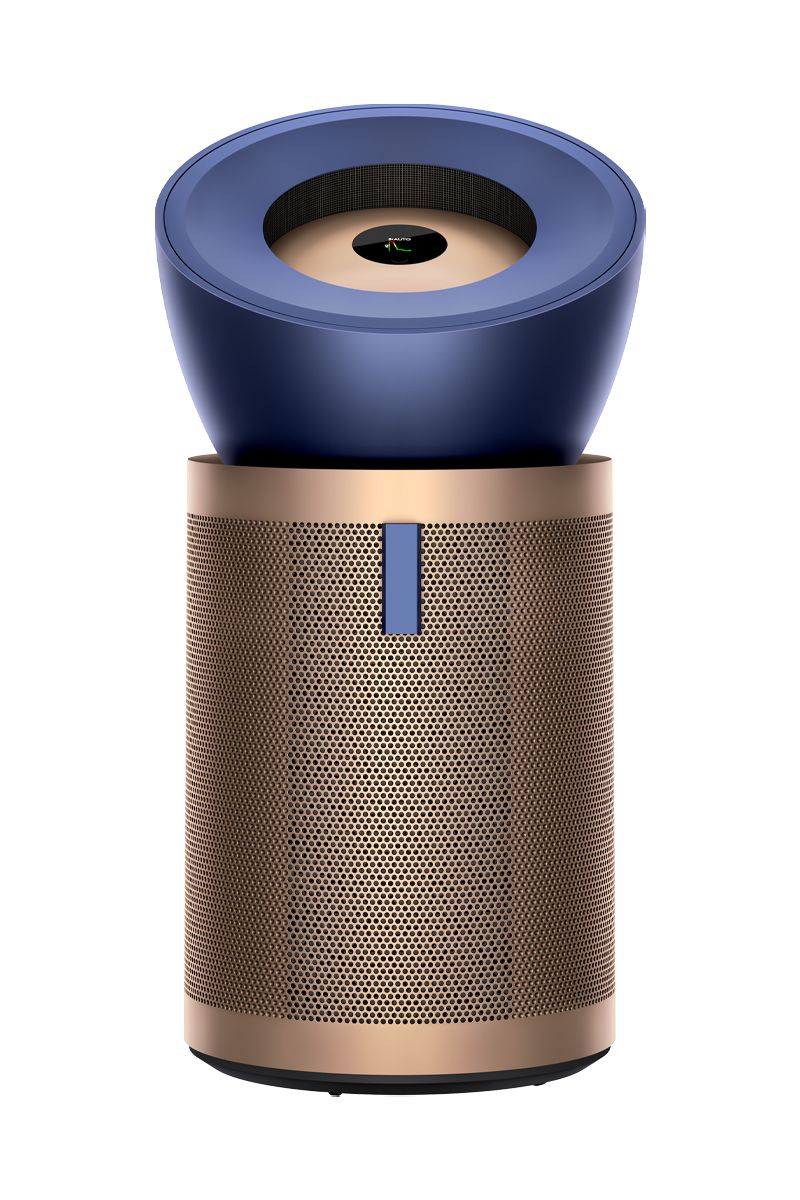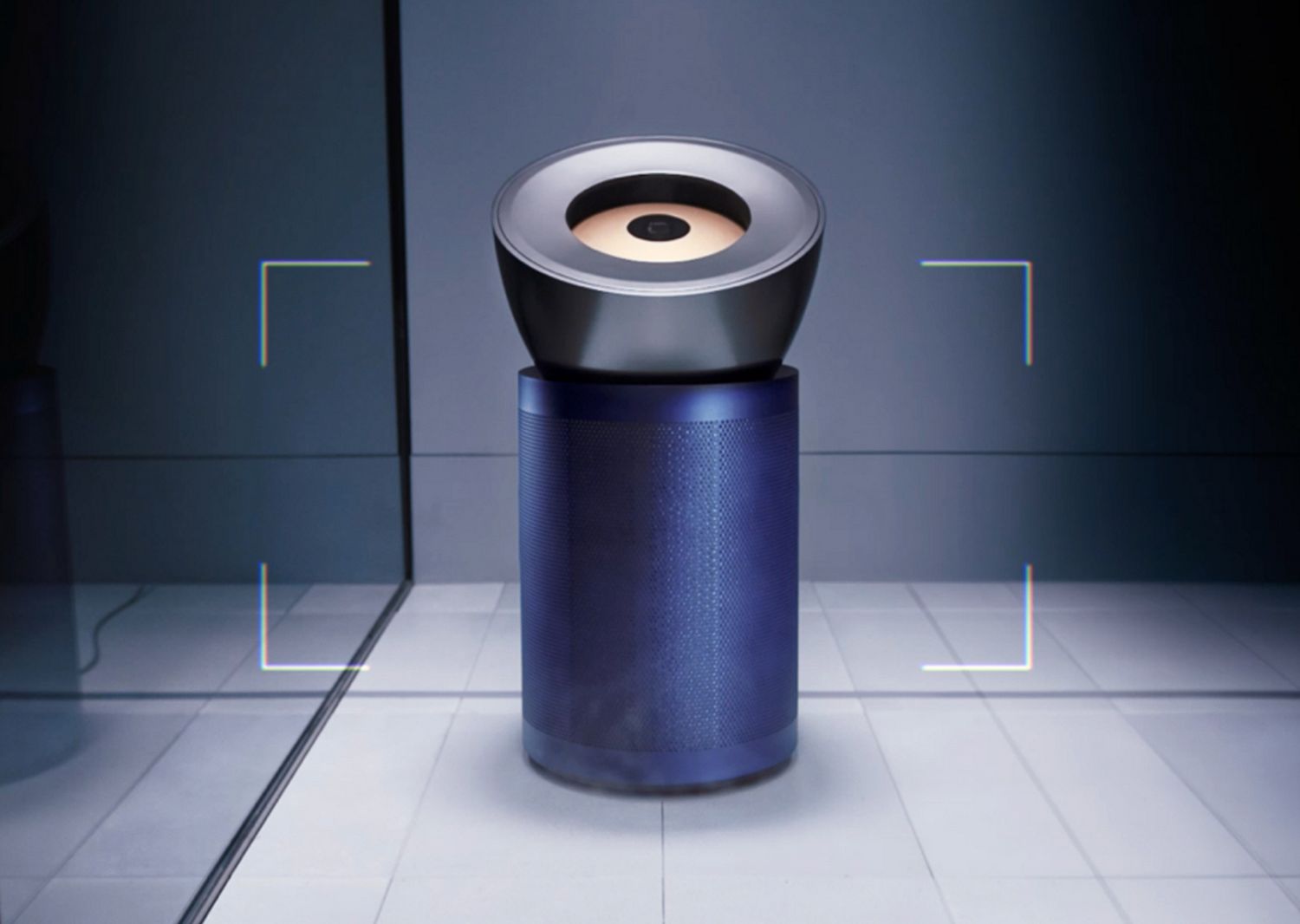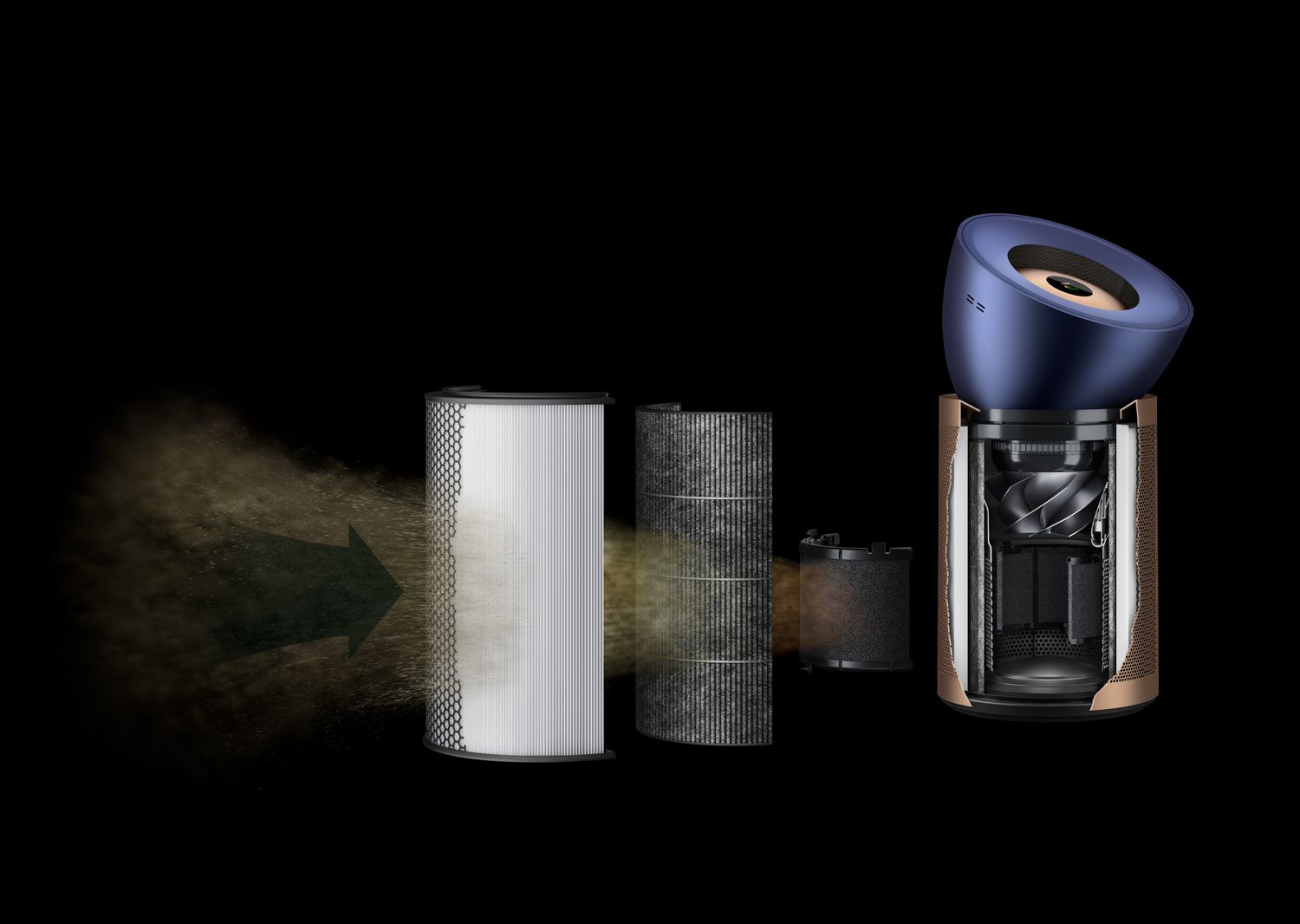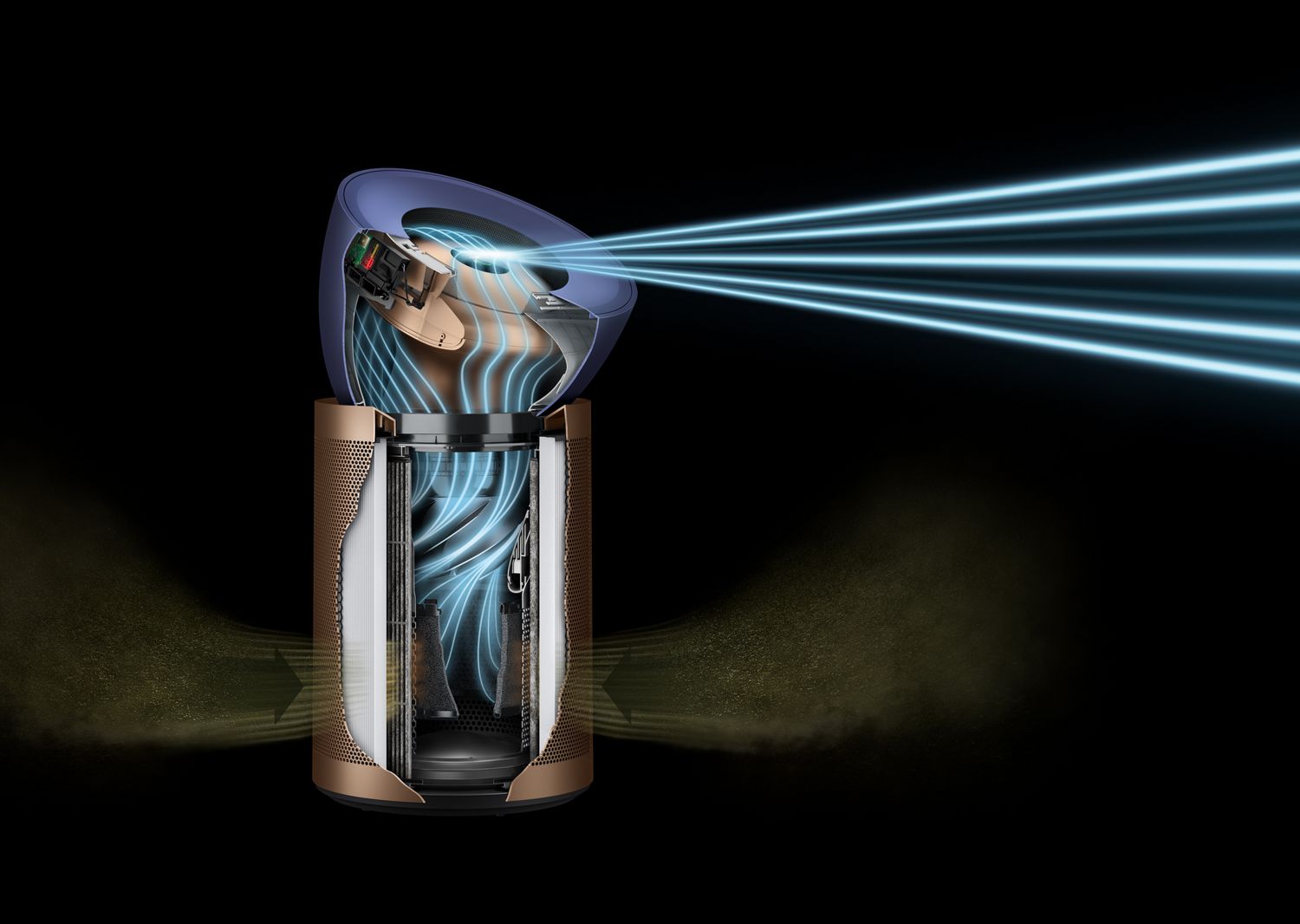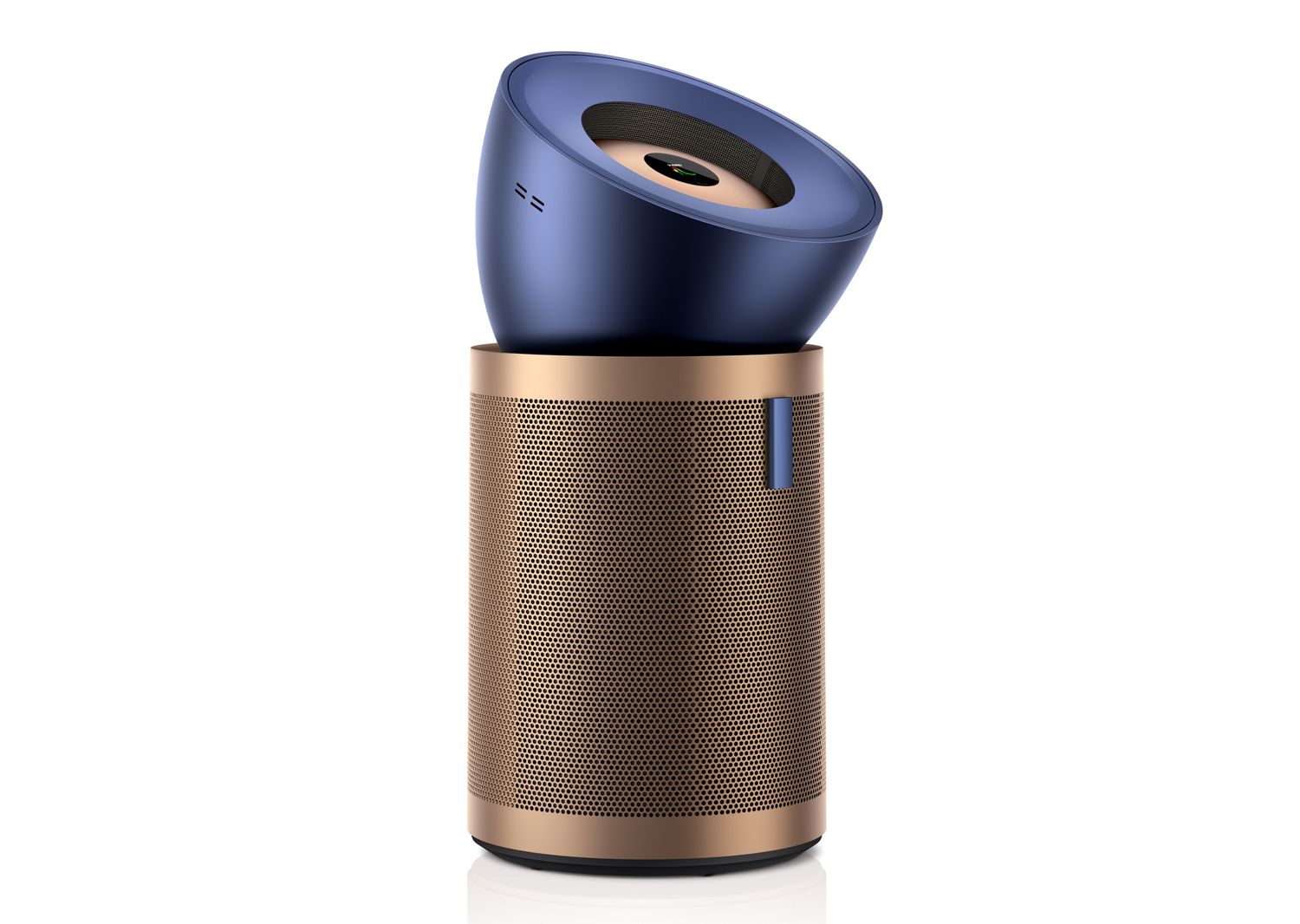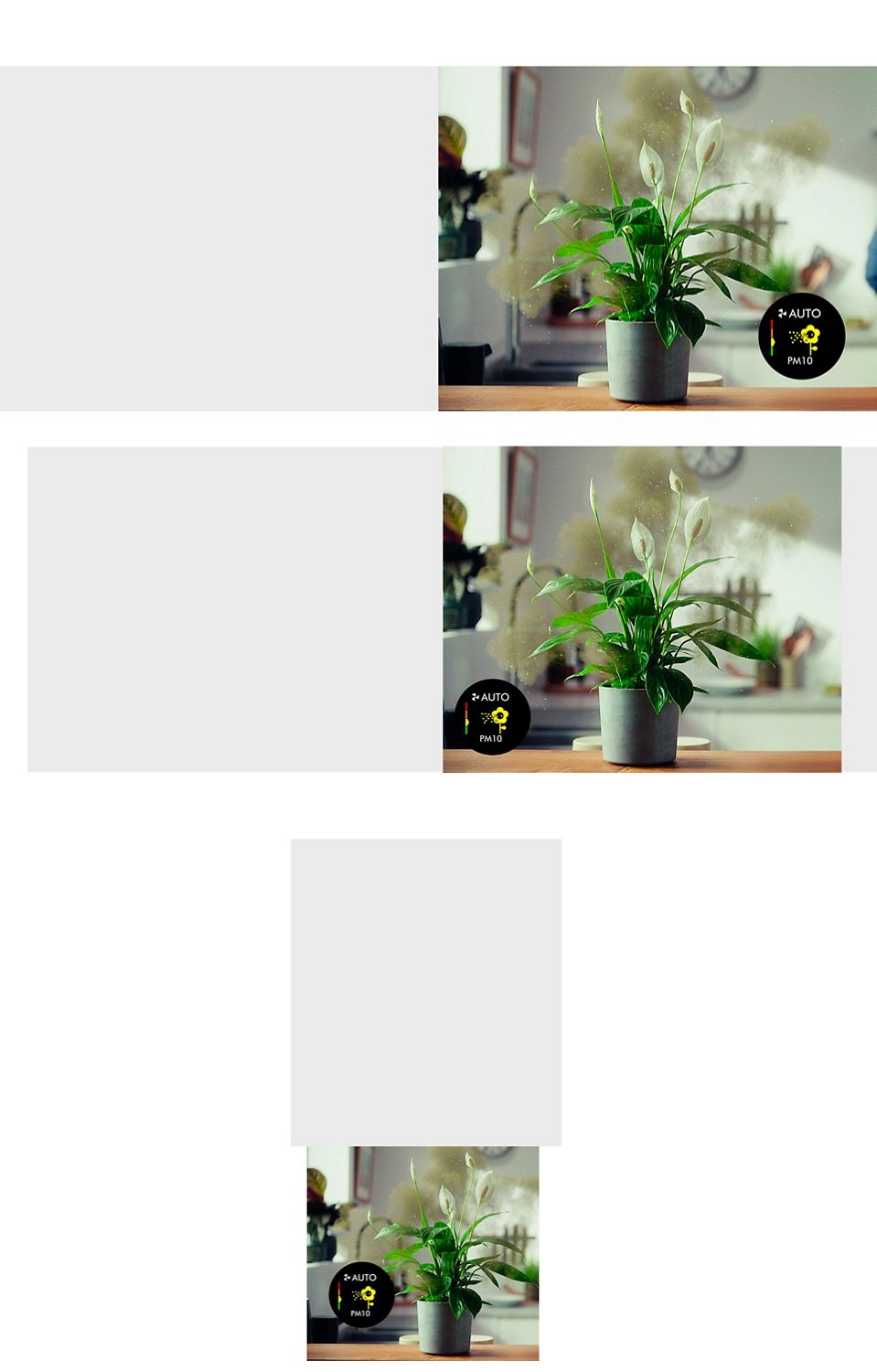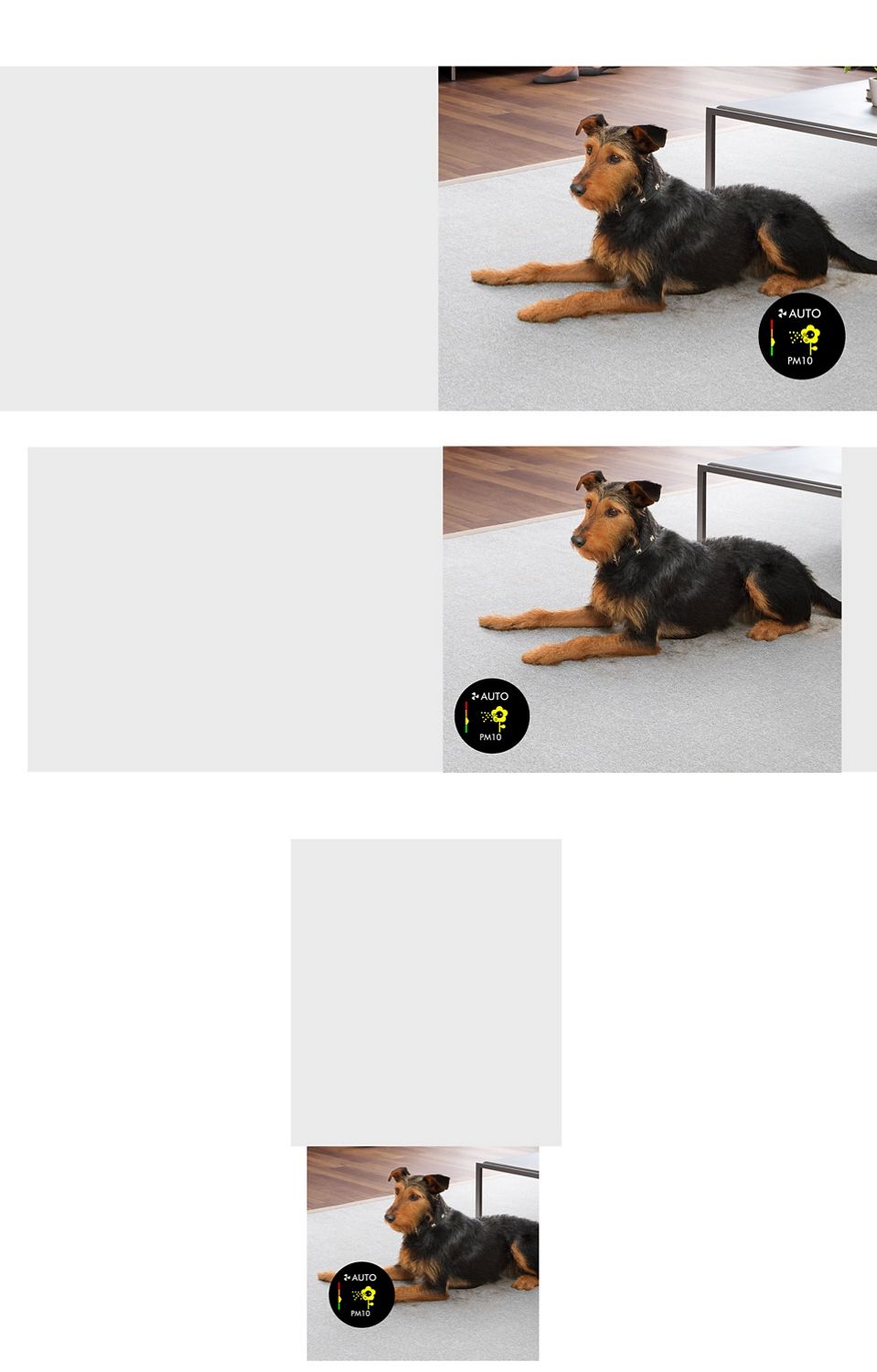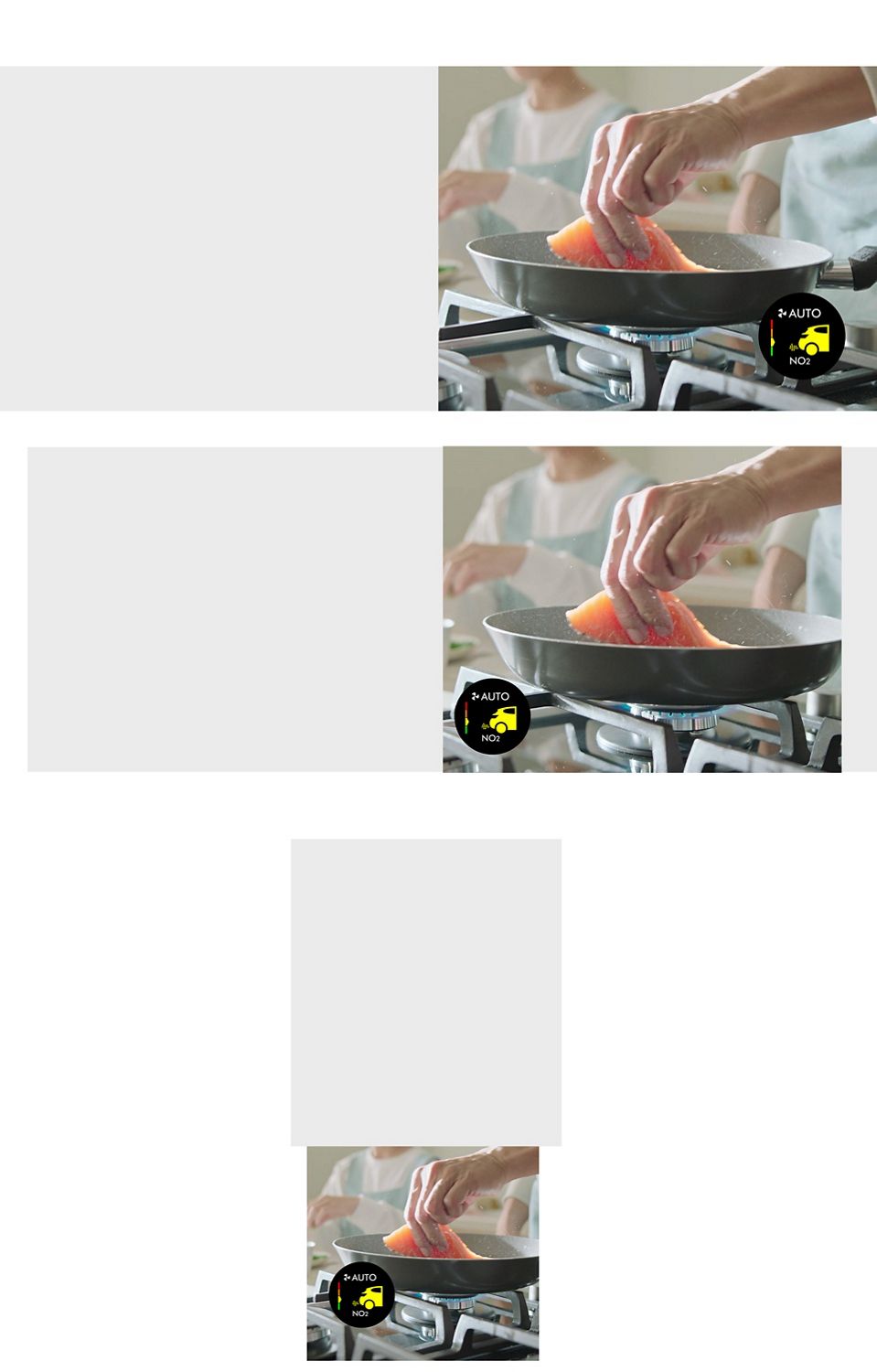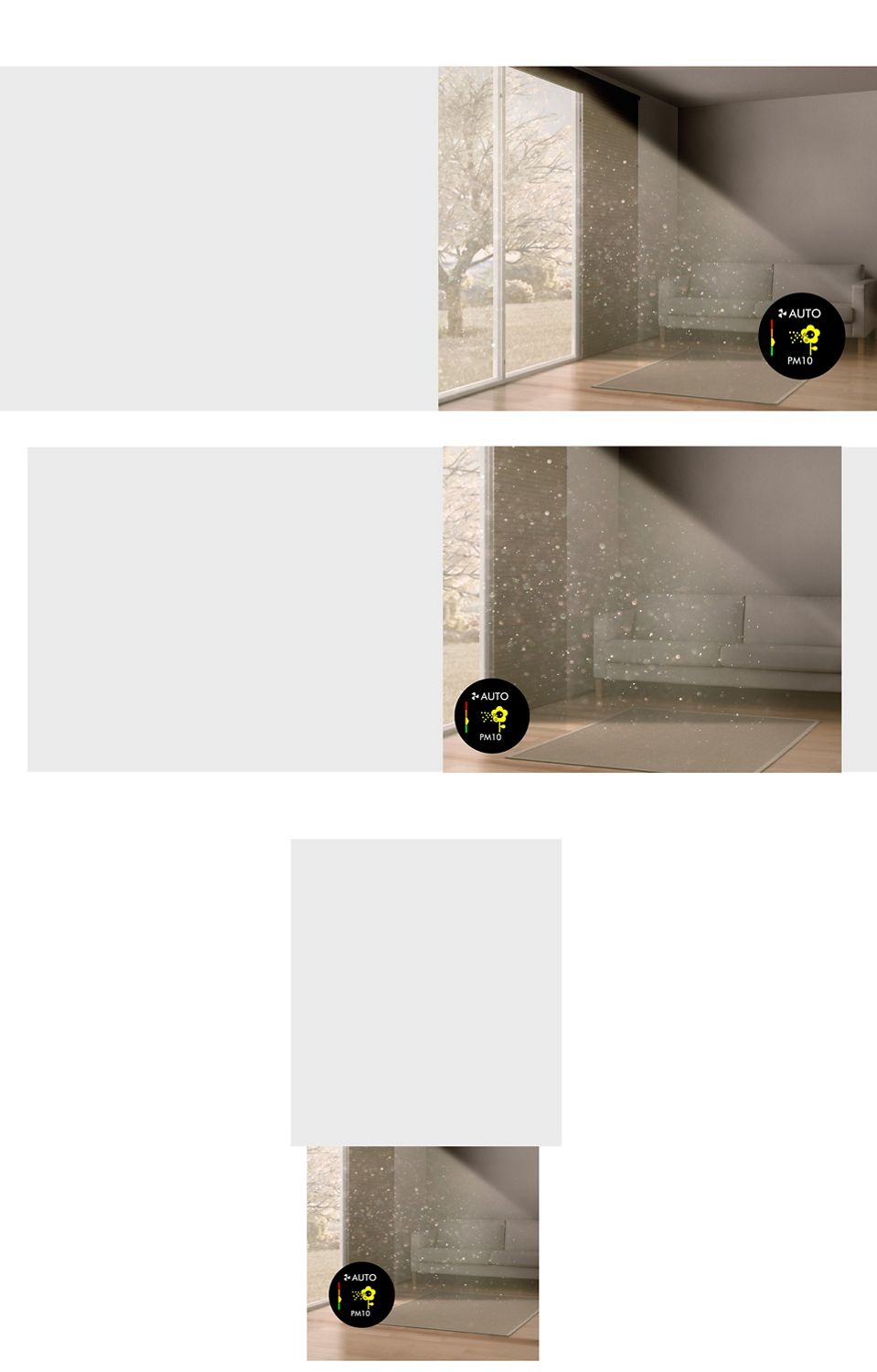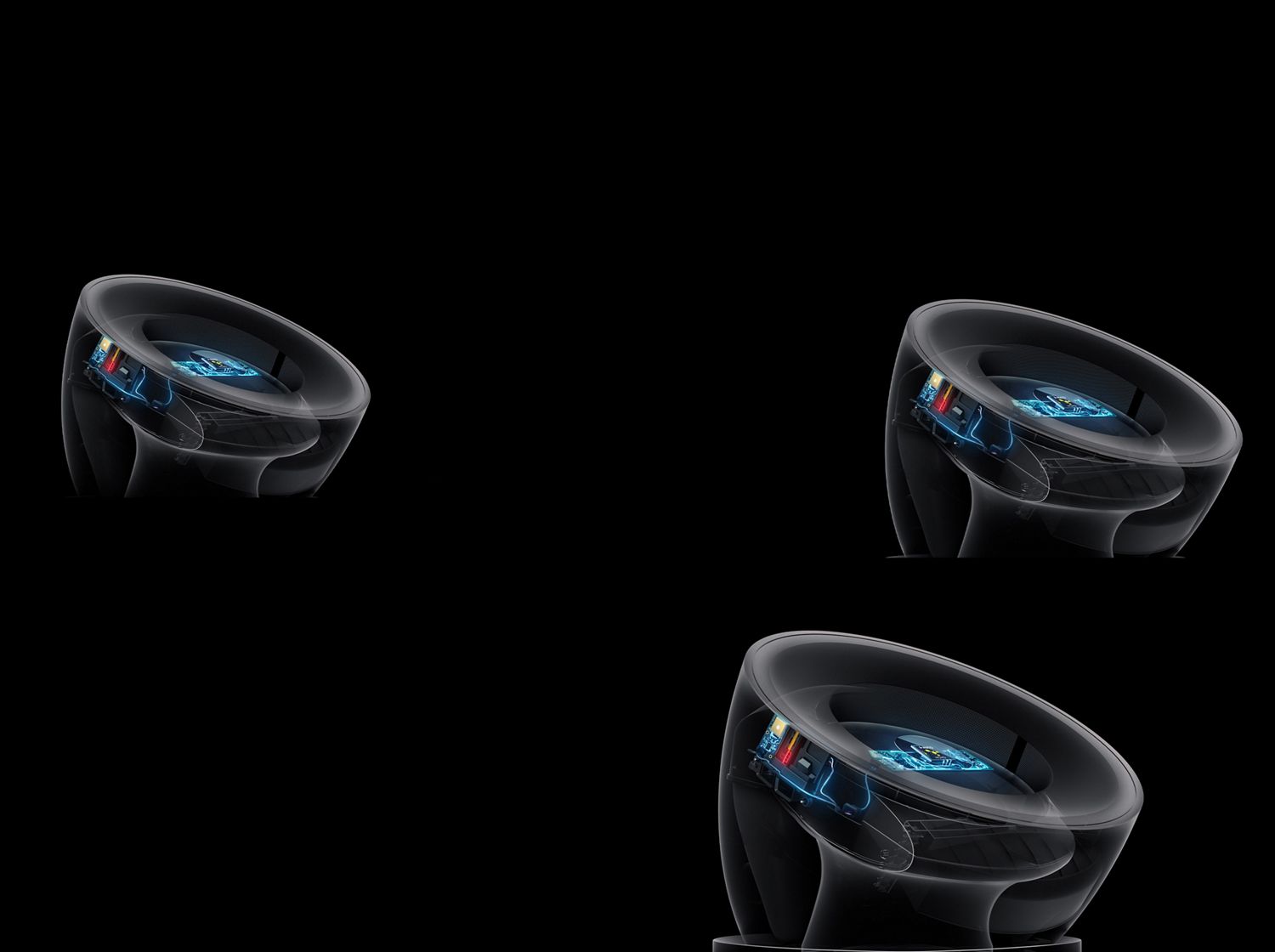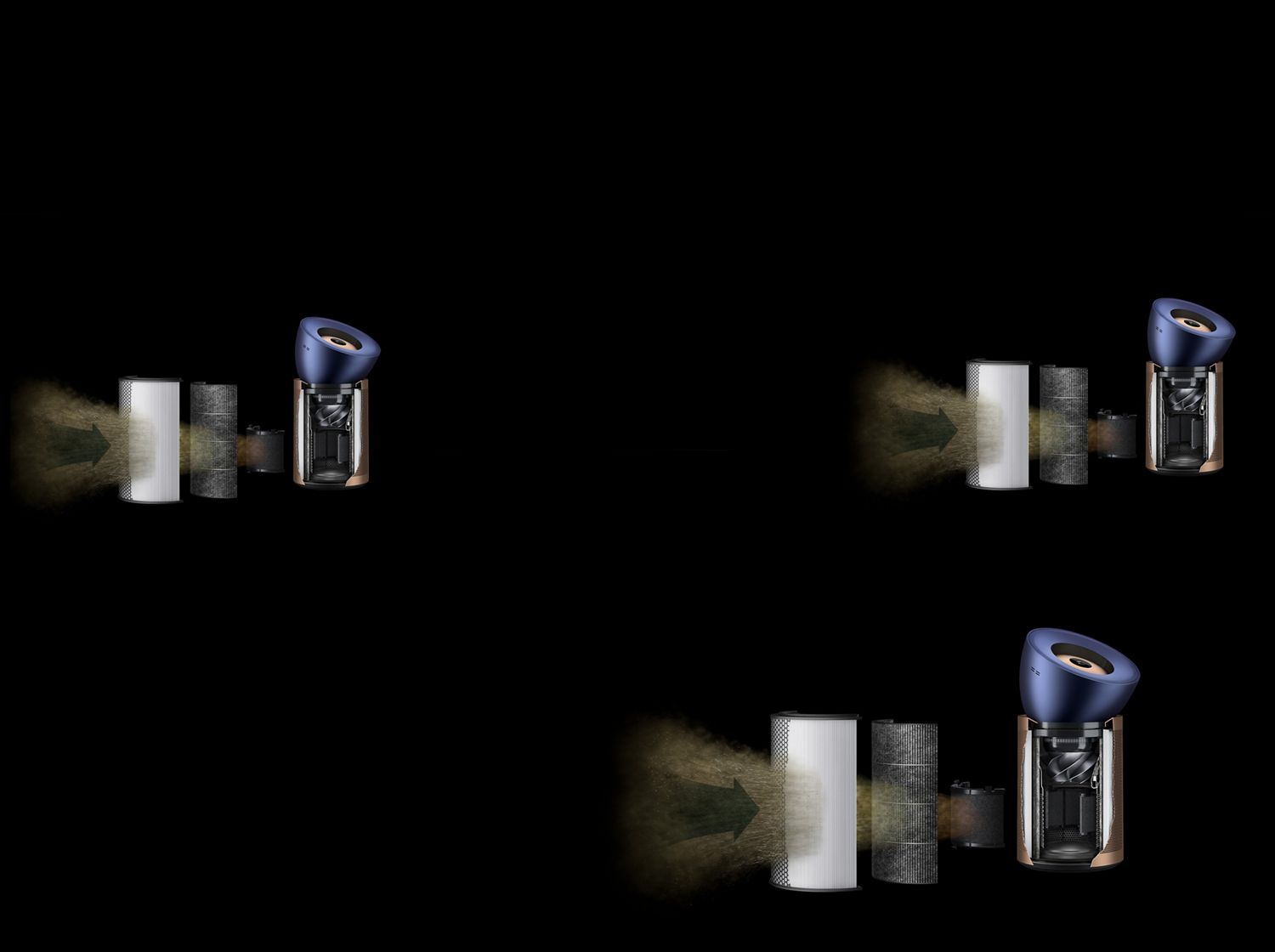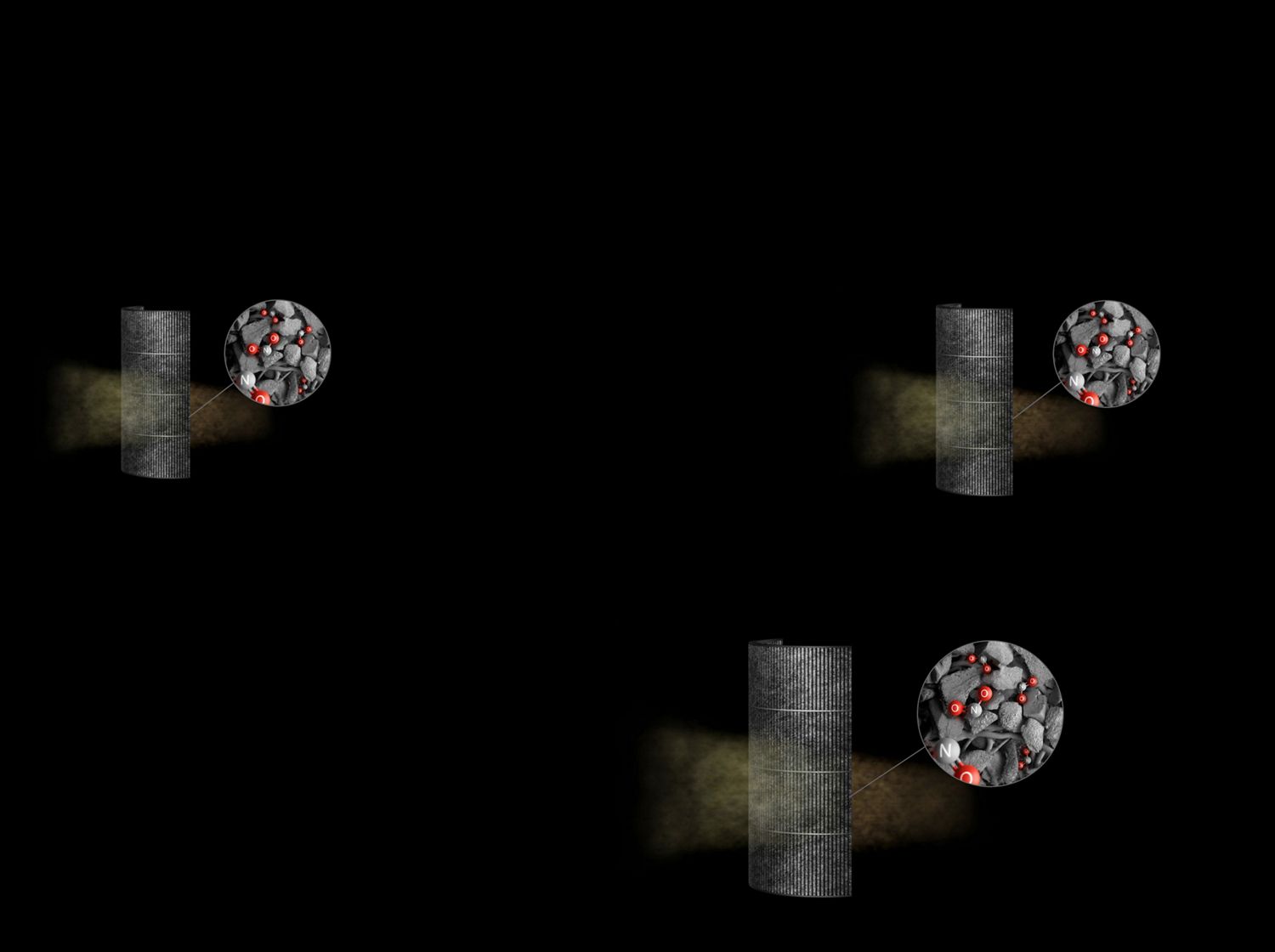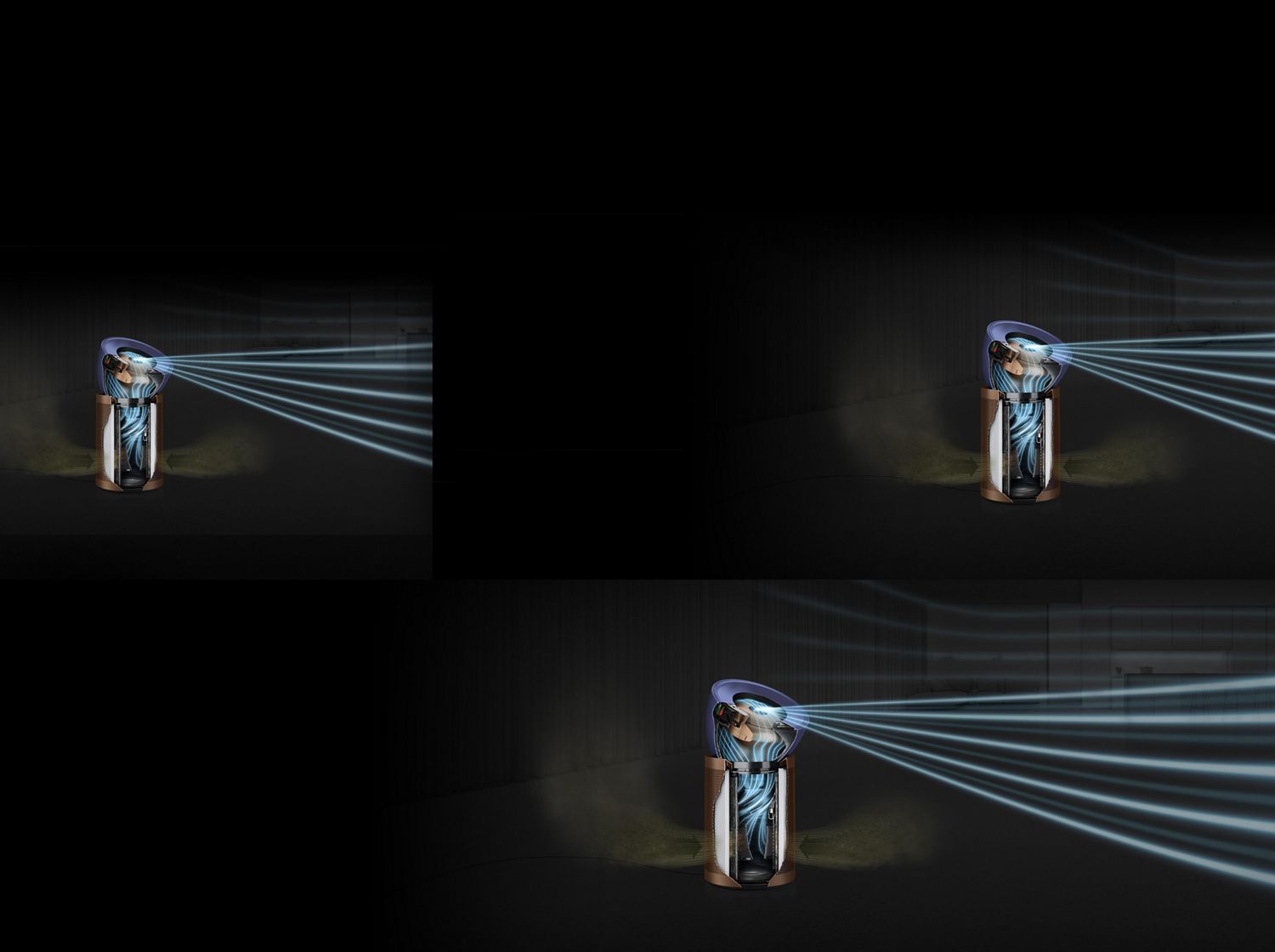Dyson Purifier Big+Quiet Formaldehyde BP04 (Prussian Blue/Gold)
Our quietest, most powerful and advanced air purifier.⁹
• With exclusive K-carbon filter. CO2 sensing.
• Captures 3x more NO2.⁴
• Also cools you.
Only at Dyson: exclusive K-Carbon filter technology captures 3x more NO₂ ³, and CO₂ sensor reports CO₂ levels in real-time.
Canada’s #1 Most Trusted Air Purifier brand*
Dyson Purifier Big+Quiet Formaldehyde
Our quietest, most powerful air purifier.¹ Purifies large spaces up to 100m.³ And cools you in hot weather.
Our most advanced filtration system yet. With three-stage HEPA H13-grade, K-Carbon and Selective Catalytic Oxidisation filters.
Removes gases,⁴ odours, dust, allergens, viruses and bacteria. Captures 99.97% of particles as small as 0.3 microns.⁵ Captures 99.9% of viruses.⁶ Reduces your exposure to pollen, pet dander and mould spores. Captures three times more NO₂, a common urban pollutant.² Removes smoke particles from wildfires.⁷ Destroys formaldehyde.⁸ Alerts you when CO2 levels are too high.
Specifications
-
Weight
11.9 kg
-
Cord length
1.8 m
-
Number of speed settings
10
-
HEPA filter
Glass fiber HEPA filter
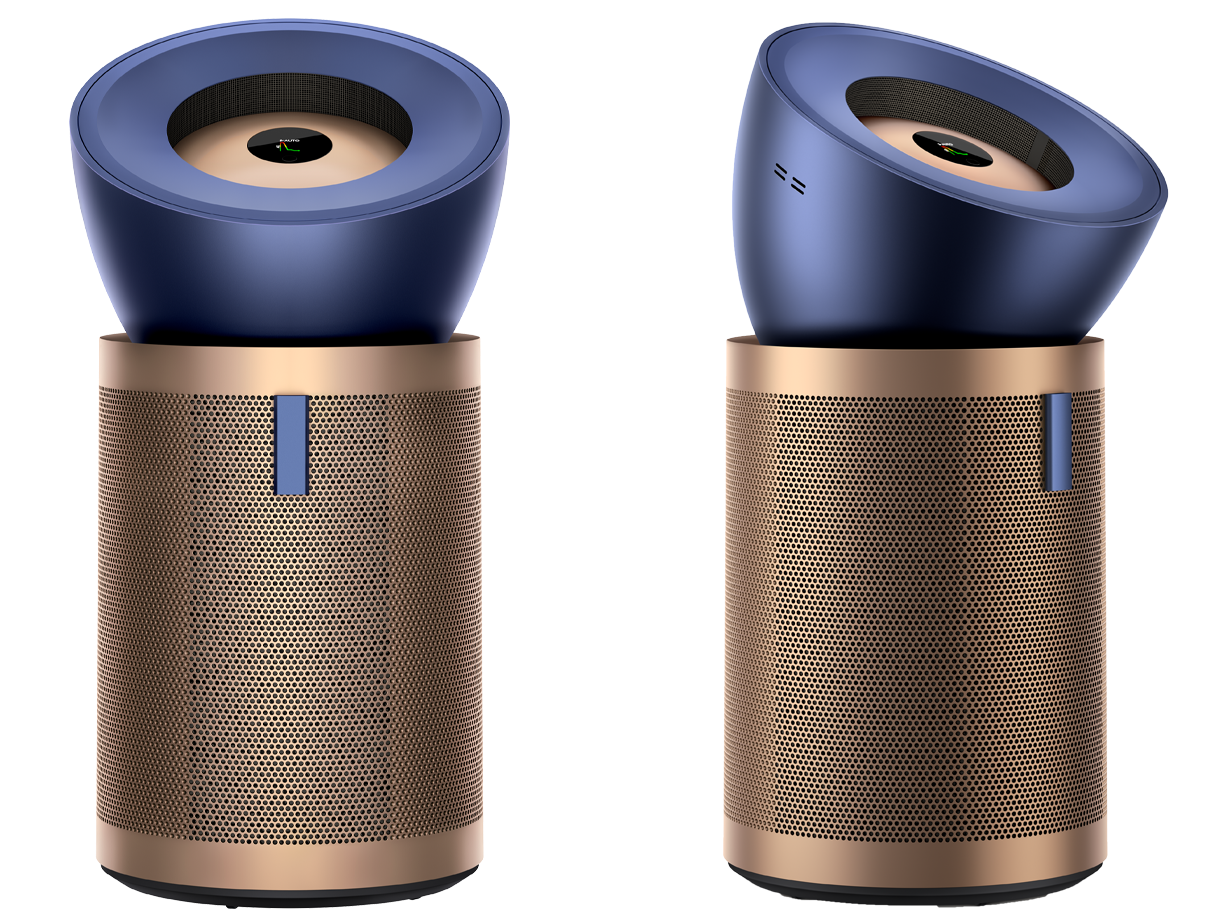
-
Height
830 mm
-
Length
434 mm
-
Width
415 mm
QUEBEC CONSUMERS:
Dyson strives to ensure the availability of spare parts and accessories for your Dyson machines; however, there may be instances where parts are out of stock. Please see below for additional information on Spares and Accessories, Troubleshooting Assistance and User Manuals, and Repair Services.
For Spares and Accessories please visit Spares & Accessories or contact the Dyson Helpline for further assistance.
For Troubleshooting and User Manuals please visit Dyson Support or contact the Dyson Helpline for further assistance.
For Repair Services and other inquiries please visit Support | Customer Service | Dyson or contact the Dyson Helpline for further assistance.
Formulations: Please note that Dyson does not offer repair parts for Dyson Chitosan™ and Dyson Omega ™ Haircare Products. Please contact the Dyson Helpline for further assistance.
Please visit The Dyson Limited Warranty Terms & Conditions for more information on Dyson’s Limited Warranty.
Reviews powered by Bazaarvoice
Dyson Purifier Big+Quiet Formaldehyde BP04 (Prussian Blue/Gold)
Overall rating
In the box
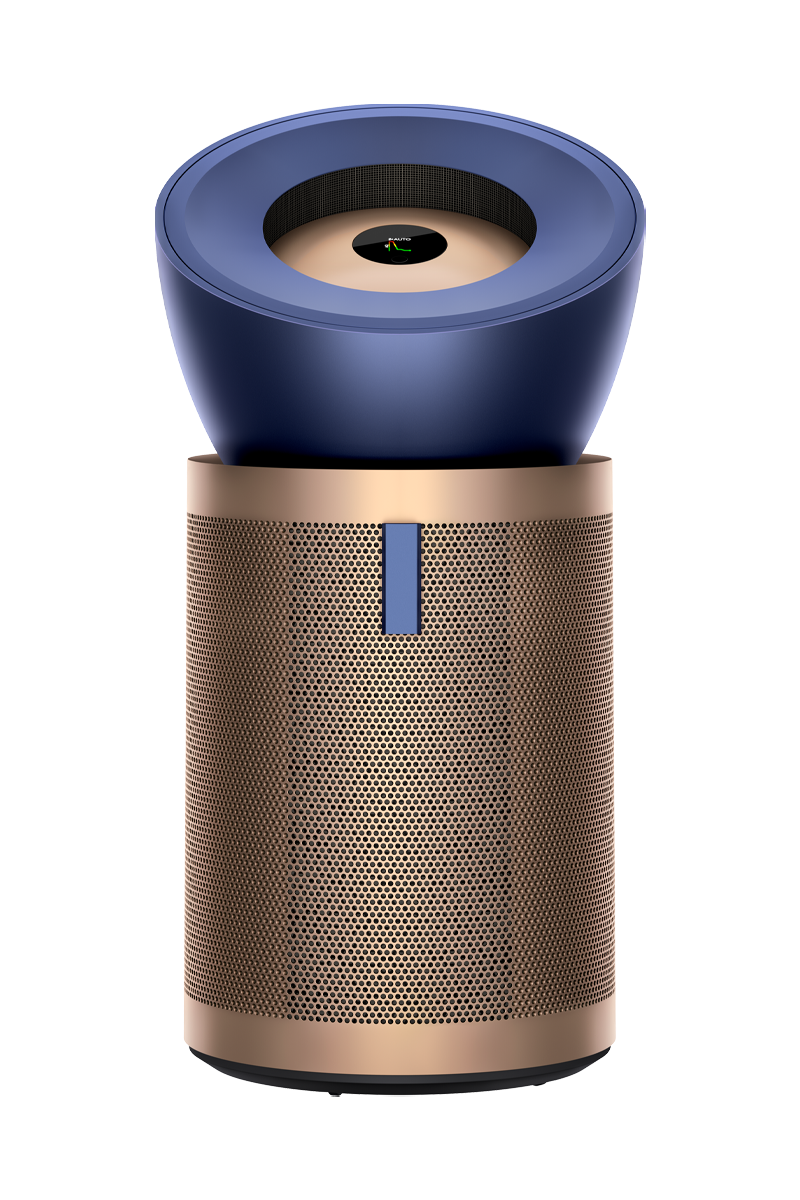
Dyson Purifier Big+Quiet Formaldehyde BP04 (Prussian Blue/Gold)
-

Remote control
Curved and magnetized to store neatly on the machine.
-
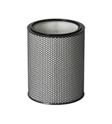
HEPA filter
Genuine Dyson HEPA Filter lifespan is 5 years.
-

K-Carbon filter
Captures 3x more NO₂. Genuine Dyson Activated K-Carbon Filter lifespan is every 2 years or when alerted by the MyDyson™ app.
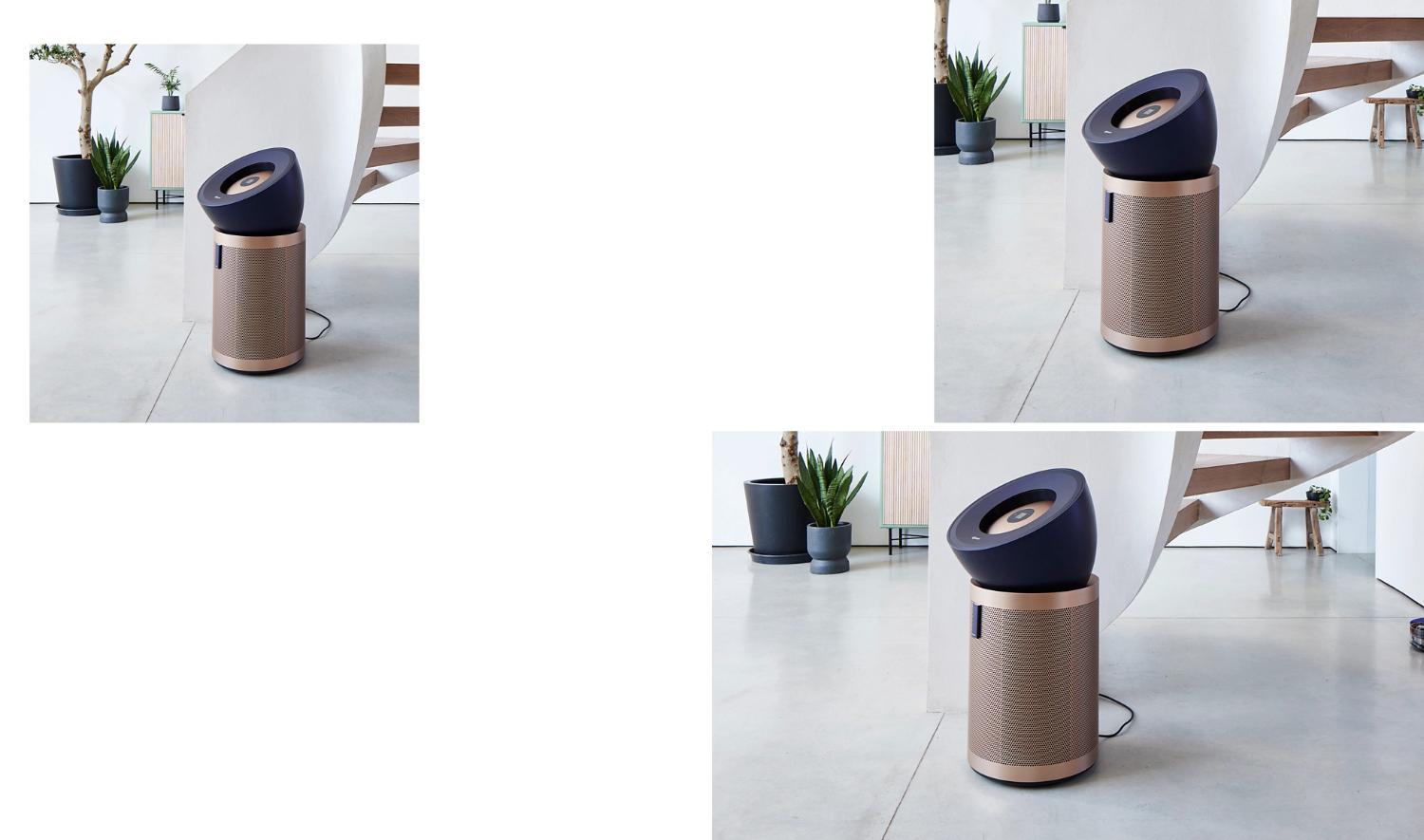
Our quietest, most powerful purifier.¹ For a healthier home environment.
Purifies any room – including large, open-plan spaces.³ Captures pollutants, allergens and odours, yet does it quietly.¹

Key features
-
Quietly purifies even at full power
Acoustically engineered to produce less noise. Night mode is 50% quieter than any other Dyson purifier.** With a Sleep timer so you can set it and forget it.
-
Powerful projection to cool you down
Delivers over 22 gallons of purified air per second. Adjust the angle of airflow between 0°, 25° or 50°, or mimic the feeling of refreshing air indoors using Breeze mode.
-
Long-lasting filter
The HEPA H13-grade filter lasts up to 11 years.⁹ Remove and dispose in one click.
-
Control via the app
Monitor what’s been captured, set schedules, browse reports, and more with the MyDyson™ app.¹⁰
-
Always sensing
In Auto mode, your purifier reacts automatically to remove pollutants, only using energy when needed.
-
Alerts you to high CO₂ levels
Reports and alerts you when CO₂ levels are harmfully high.
-
Easy to manoeuvre
Discreet, hidden wheels designed for hard surfaces let you easily move your machine around the room.
Discover the pioneering technology inside
Frequently asked questions
The Dyson Purifier Big+Quiet Formaldehyde is our most advanced, quietest, and most powerful air purifier. As our latest top-of-the-range purifier, it uses cone aerodynamics to deliver powerful, long-range air projection – circulating purified air and driving even distant pollutants back through sealed filters. For whole-room purification – capturing 99.97% of ultrafine particles², even in large spaces.¹ You can control your air quality, wherever you are. At the touch of a button you can monitor the air quality levels in your home using the MyDyson™ app⁶ – viewing in real-time the benefits of owning an air purifier.
Not all purifiers are equal. Getting the right size purifier, with the best projection is essential to ensure it will effectively purify the air in your space. We've tested the Dyson Purifier Big+Quiet Formaldehyde extensively – to ensure the sensors, filtration system and motor work together to purify a large living space. It has the projection power to purify spaces up to 100m². The Dyson Purifier Big+Quiet Formaldehyde also has our largest ever filtration system – and the 360° HEPA H13-grade filter doesn’t need replacing for up to 5 years.
The Dyson Purifier Big+Quiet Formaldehyde air purifier range is engineered to remove 99.97% of ultrafine particles², such as dust, allergens, odours, gases³ like benzene and nitrogen dioxide and even formaldehyde gas.⁵
The Dyson Purifier Big+Quiet Formaldehyde has our most advanced filtration system. We recommend replacing the 360° HEPA H13-grade filter after using it for up to five years or sooner. The K-Carbon filter should be replaced every two years, or sooner if required. The Selective Catalytic Oxidisation (SCO) filter is permanent and never needs replacing.
The Dyson Purifier Big+Quiet Formaldehyde has been designed to work from the corner of a room, at least one metre away from the wall. For optimal performance we recommend projecting air either along a wall or across the room. You can adjust the angle of projection to suit your preference.
The Dyson Purifier Big+Quiet Formaldehyde has discreet wheels, which aren’t visible when the machine is upright. These wheels are designed for hard floors – so you can move your purifier around easily.
-
Allergens
An allergen is a substance that can cause an allergic reaction by triggering the body’s immune system. Common indoor allergens include dust mite droppings, pet dander, mold, and pollen.
-
Bacteria
Microscopic, single-celled organisms that exist in their millions, in every environment. Not all bacteria are harmful, but some can have adverse effects, such as E. coli.
-
Benzene
Benzene is colourless, flammable liquid produced by both natural and man-made processes. It’s a natural part of crude oil, gasoline, and cigarette smoke. Indoors, it comes from products such as glues, paints, furniture wax, and detergents.
-
Carbon dioxide (CO₂)
A colourless greenhouse gas, which comes from the extraction and burning of fossil fuels. Increased CO₂ levels can impact cognitive function.
-
Formaldehyde
This colourless, flammable gas is used in some building materials and household products. Sources can include some fabrics found in flooring and furniture, glues, paints, varnishes, air fresheners, and household cleaners.
-
H1N1 virus
This subtype of Influenza A virus, also known as swine flu, caused a global flu outbreak. H1N1 produces respiratory infectious diseases in humans and pigs. Symptoms can be similar to seasonal flu.
-
HEPA 13
HEPA (High Efficiency Particulate Air) is an air filter efficiency standard and a measure of a filter’s performance. To achieve this standard, filters must meet a minimum of 99.97% particle removal at the most penetrating particle size.
-
Humidification
A process of increasing air moisture content through the addition of water vapour or steam. Humidifiers can add moisture to the air in dry conditions, creating a more comfortable indoor environment when needed.
-
Microns
Airborne particles are usually described in microns. One micron is equal to one-millionth of a metre. The human eye can see debris and dust that are approximately 25 microns in size.
-
Nitrogen dioxide (NO₂)
Nitrogen dioxide is a liquid below 21.2 °C and a gas at higher temperatures. It is toxic to humans in both states. Gas stoves and space heaters are the most common indoor sources of NO₂ emissions. Other sources include improperly vented furnaces and water heaters.
-
Pet dander
Pet dander is made up of tiny particles of skin, saliva and urine, shed by animals with fur or feathers. Pet dander lingers in the air before settling on surfaces such as furniture, bedding, and fabrics. Exposure to these airborne particles can trigger allergies.
-
Particulate matter (PM)
Particulate matter contains microscopic solids or liquid droplets, measured in microns. Indoor PM can be generated through many day-to-day activities such as cooking, cleaning, and the burning of candles and fires.
-
Purification
The process of making something free of any contaminants or physical impurities. Air purification is designed to filter the air in your home – removing pollutants such as dust, allergens and viruses.
-
Volatile organic compounds (VOCs)
Volatile organic compounds are potentially harmful gases found in many household products. Common sources include paints, varnishes, air fresheners, cosmetics, and cleaning products.
-
Pollen
Pollen is a powdery substance released from seed plants as part of their reproduction process. It typically appears from trees in the spring, grasses in the summer, and weeds in the autumn. Pollen grains are among the most common allergens.
-
House dust mites
Dust mites are tiny insects that commonly live in household dust. They are one of the biggest causes of allergies. Each gram of house dust contains approximately 1000 dust mites.
-
Aspergillus mold
A common name for a visible group of fungi, mould thrives wherever there is dampness – sending out millions of spores into the air. Exposure to mould occurs via inhalation, skin contact, or ingestion.
¹ Purifying a large room up to 100m² proven with computational fluid dynamics (CFD) modeling with purifier placed in a corner of the room, running at maximum flow and horizontal projection. Projection distance measured from internal flow reach testing. Actual performance in real life conditions may vary.
² Tested to IEST RP-CC001.
³ Tested to JEM 1467 (acetic acid, acetaldehyde, ammonia), GB/T18801 (formaldehyde, benzene) and DTM-003282 (NO2). Gas capture rates vary.
⁴ Compared to absorption by the standard carbon filter in Dyson Purifier Big+Quiet Formaldehyde (BP03).
⁵ Third party full-machine testing based on GB/T 18801-2022 formaldehyde cumulative clean mass testing with continuous injection until plateau of formaldehyde CADR is achieved. Results may vary in practice.
⁶ App functionality may vary per market. Requires Wi-Fi and app-enabled device. Standard data and messaging rates may apply. Requires iOS version 10 or above, or Android version 5 or above. Your mobile device must have Bluetooth® wireless technology 4.0 support. The Bluetooth® word mark and logos are registered trade marks owned by the Bluetooth SIG, Inc. and any use of such marks by Dyson is under license. Apple, the Apple logo and Siri are trademarks of Apple Inc., registered in the U.S. and other countries. App Store is a service mark of the Apple Inc., registered in the U.S. and other countries. Google Play, the Google Play logo, Google Assistant are trademarks of Google Inc.
⁷ Refer to the MyDyson™ app for compatible voice services.
⁸ Particle challenge with DEHS oil specified in EN1822 within a chamber specified in ASTM F3150. Tested in Max mode for whole-machine efficiency above 99.95%.
⁹ Compare Dyson’s air purification fans launched before 2023. The measured sound power is 56dB(A) at speed 10.
*Voted most trusted Air Purifier brand by Canadian shoppers based on the 2025 BrandSpark® Canadian Trust Study.
**Excluding SP01.


